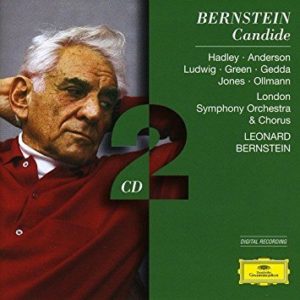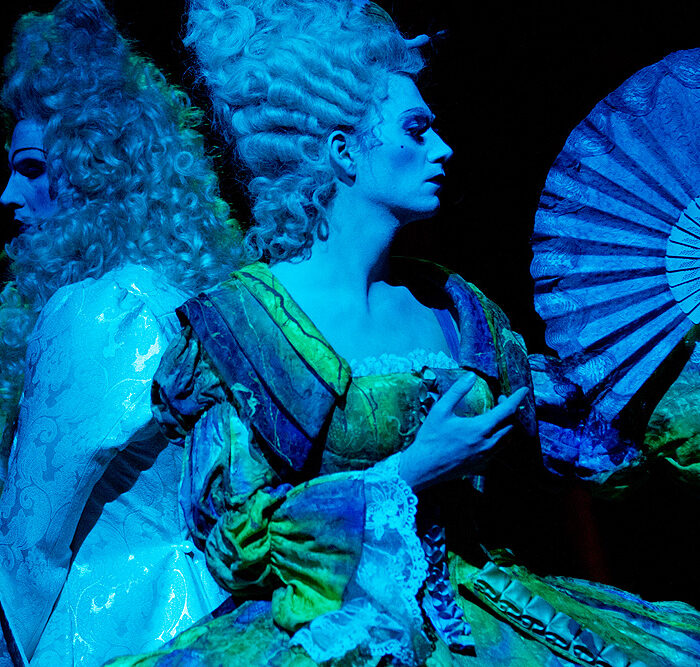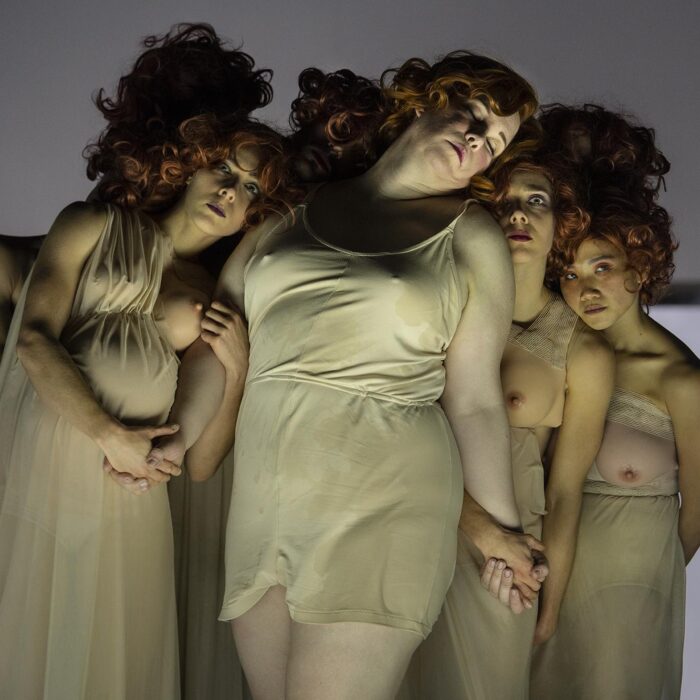
Opera Profile: Bernstein’s “Candide”
By Logan MartellMaking its premiere on December 1st, 1956, Leonard Bernstein’s “Candide” is adapted from a novella of the same name written by the Enlightenment-era philosopher Voltaire.
Being a comic operetta, it satirizes the prevailing attitudes of Voltaire’s time, particularly those of the church and of monarchism. Playwright and librettist Lillian Hellman saw clear parallels between the Inquisition of Voltaire’s time and the surge of anti-Communist fervor that was coming from Washington during her own time.
A number of lyricists were attached to the project after the original one, John LaTouche, was replaced by poet Richard Wilbur. When the operetta was ready for its debut, Bernstein was also working on the score for “West Side Story.” Since then it has seen a number of revisions leading up to a 1989 version which Bernstein felt truly captured the essence of the operetta. This version was first produced by the Scottish Opera, and then recorded at the London Barbican Centre.
Short Plot Summary
The operetta opens in the country of Westphalia. Candide, the illegitimate nephew of the Baron is in love with Cunegonde, the Baron’s daughter. Dr. Pangloss, said to be the world’s greatest philosopher, teaches them the way to happiness through an extremely optimistic perspective. When Candide and Cungonde become engaged, the Baron exiles him out of disdain for his low social class. Here he is picked up by the Bulgar Amy and joins their ranks in a misguided attempt to free the nation. When Candide is captured by the Westphalian army, they attack the Baron’s castle; the Baron, his children, Dr. Pangloss, and Cunegonde are all killed. In vain he searches for any sign of Cunegonde. After becoming a beggar, Candide is later reunited with Dr. Pangloss, who was miraculously saved by a doctor. The two of them are hired by a merchant ship sailing to Portugal, but when they arrive a volcano erupts, followed by an earthquake. Candide and Pangloss are blamed for the disaster which claims the lives of 30,000 people. Dr. Pangloss is hanged, while Candide is whipped brutally. Eventually making his way to Paris, France, Candide is joyfully reunited with Cunegonde, who survived the destruction of her father’s castle, but has become a prostitute in the service of the wealthy Jew Don Issachar. When Cunegonde’s elderly companion warns them of the approaching Issachar and Archbishop, Candide ends up killing them both. While they manage to flee to Spain, the French police find them, and so the three make for the New World when Candide is offered to fight for the Jesuits in South America.
Now in Uruguay, Candide’s time there is short after Cunegonde is convinced by the Old Lady to marry the local governor to support herself. The Old Lady makes Candide believe the police are still after him, and so he flees with his valet, Cacambo, until they arrive at a Jesuit camp. There they find Maximillian, the Baron’s son, and Paquette, a serving girl from the castle; both have been revived and are serving as the Father and Mother Superior of the camp. When Candide confides in Maximillian his desire to marry Cunegonde, a fight breaks out between them that results in Candide stabbing Maximillian to death; once again Candide is forced to flee the area.
Three years later, Candide sails downriver in the jungle and happens upon the fabled city of Eldorado. While life there seems idyllic, the absence of Cunegonde weighs heavily on Candide. The locals show Candide and Cacambo the way out and give them several golden sheep. All but two of the sheep die on their journey, and so Candide gives one to Cacambo so that he may purchase Cunegonde from the governor; the last sheep he uses to purchase a ship from Vanderdendur, a Dutch scoundrel. Though the ship sinks, Candide is rescued by a passing galley, in which are five former kings who have adopted simple lives. Among the slaves who row the galley is Dr. Pangloss, who yet again has been revived.
The ship arrives in Venice, Italy during a Carnival festival. Everyone is masked as they gamble while Candide searches for Cunegonde, who has been hired to swindle gamblers out of their money. When she tries this tactic on the masked Candide, and both their disguises fall off, Candide is heartbroken to discover how low Cunegonde has fallen. He leaves, and uses the remainder of his money to purchase a small farm outside Venice. After not speaking for many days, Candide decides to finally marry Cunegonde.
Famous Musical Numbers
Arguably the most famous piece of music in the entire work is the aria “Glitter and Be Gay,” sung by Cunegonde towards the end of Act I. The song has become a favorite for its bright coloratura, giving many sopranos, including a young Barbara Cook, a chance to show off their vocal technique.
Watch and Listen
Here is a legendary concert recording of the work featuring the composer himself at the podium.
Categories
Opera Wiki

